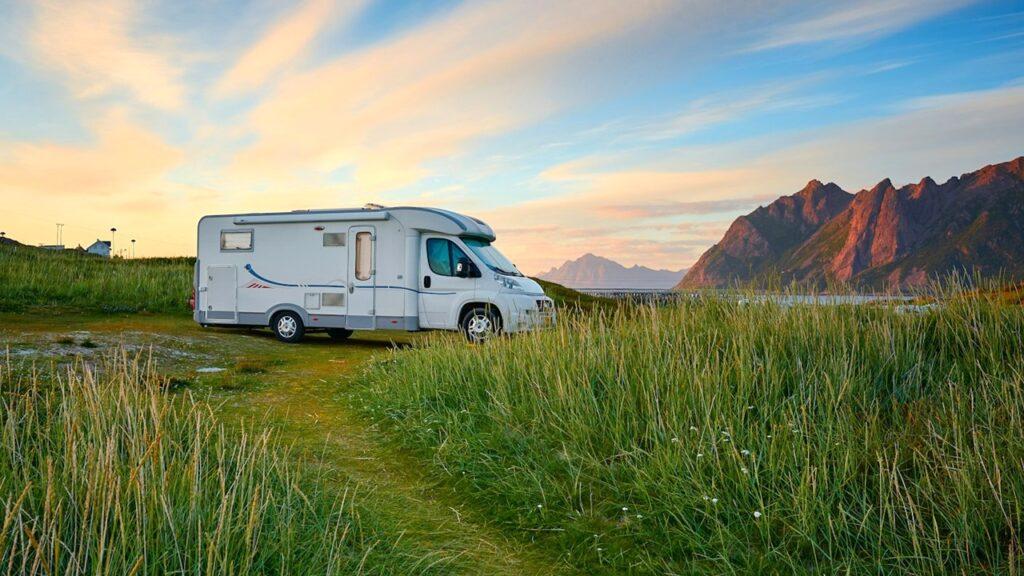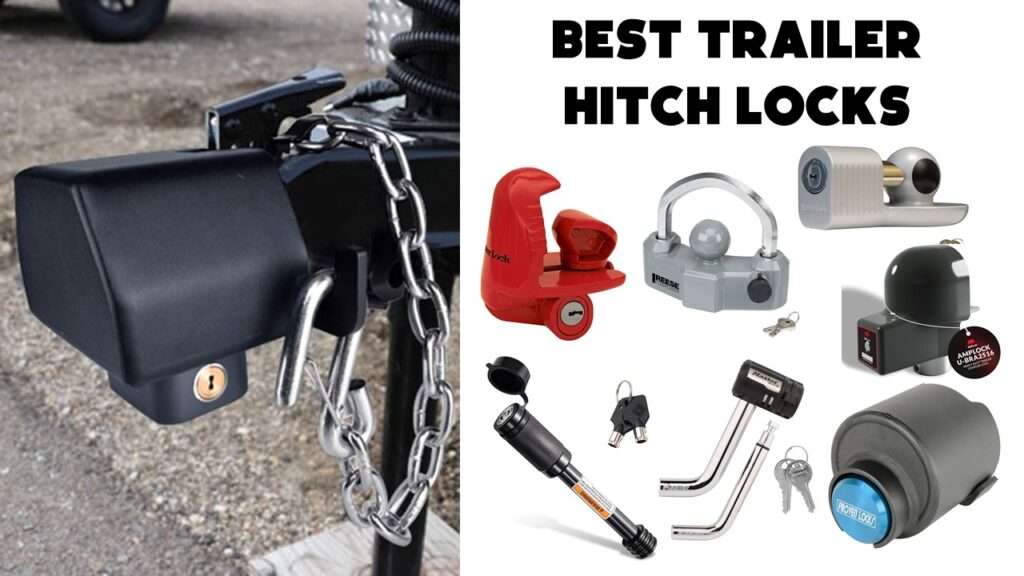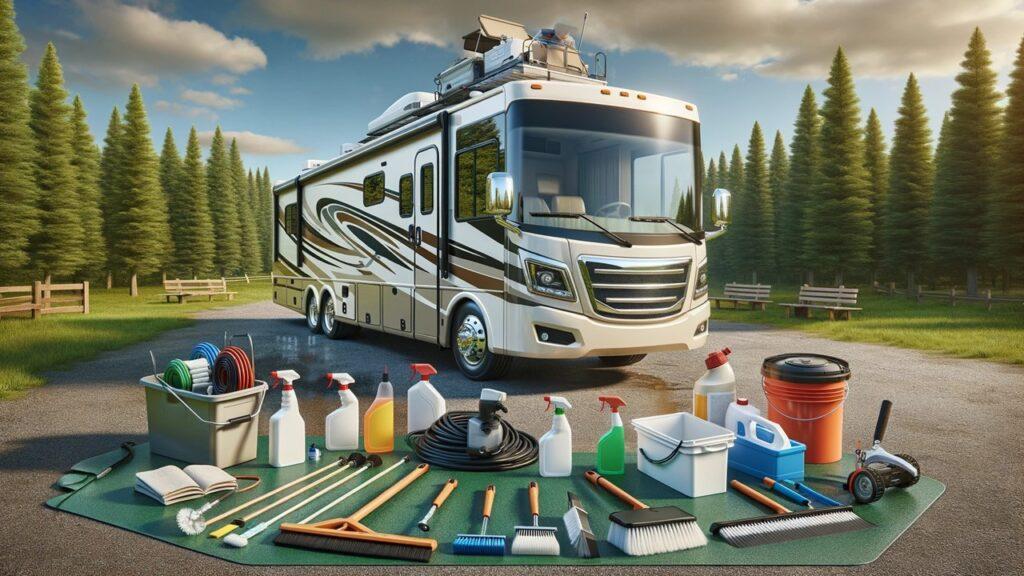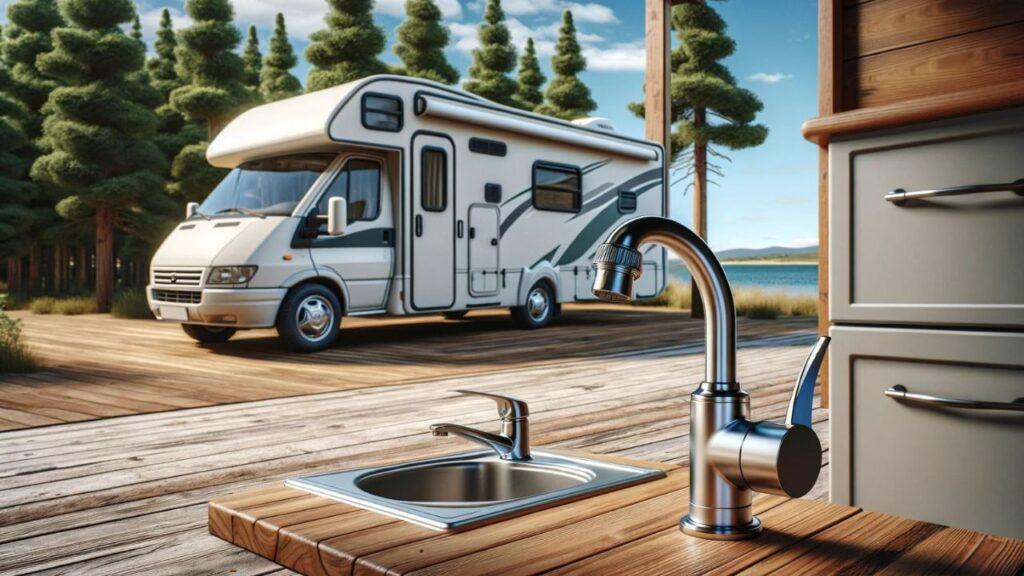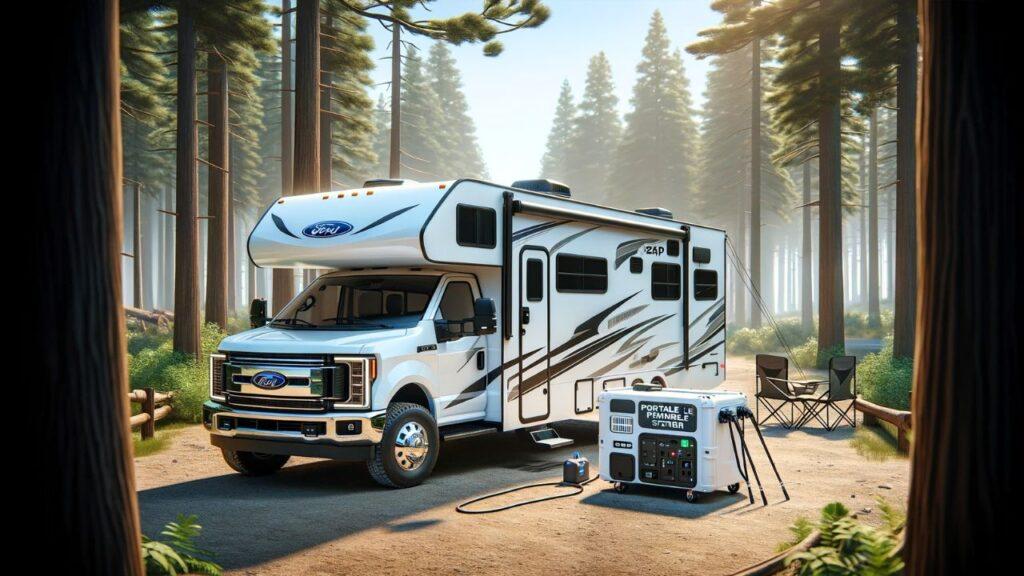If you are looking for the best RV portable waste tank for off-grid camping or long-term travel, you’re in the right place. After testing the top RV tote tanks on the market, we’ve narrowed down the best-performing options for every type of traveler—from weekend warriors to full-time RVers. Whether you’re dumping black water or grey water, these tanks simplify waste handling without messy hassles—especially when paired with a durable RV sewer hose that ensures smooth transfers.
We’re reader-supported. When you buy through links on our site, we may earn an affiliate commission. As an Amazon Associate, we earn from qualifying purchases, at no extra cost to you.
Best RV Portable Waste Tank: Our Top Picks
- Best Overall: Camco Rhino 36-Gallon Camper/RV Tote Tank
- Best Value Option: RecPro RV 36 Gallon Portable Waste Tank
- Largest Capacity Option: Barker (30844) 4-Wheeler Tote Tank
- Best Compact Option: Hike Crew RV 10.6 Gallon Waste Holding Tank
- Best for Small RVs: Thetford SmartTote Portable RV Waste Tote Tank
- Best Lightweight Option: Rhino Portable Holding Waste Tote Tank
- Best Maneuverability Option: Camco Rhino 28-Gallon Portable Camper/RV Tote Tank
- Best Ease of Use: Thetford 40510 Smart Portable Waste Tote Tank
- Best Full Kit Option: Venustank 39 Gallon RV Portable Waste Tank 4 Wheel
1. Best Overall: Camco Rhino 36-Gallon Camper/RV Tote Tank

Key Details:
- Capacity: 36 gallons
- Wheels: Heavy-duty no-flat wheels
- Material: UV-stabilized blow-molded HDPE
- Includes: Steel tow adapter, 3’ sewer hose, tank rinser
- Extras: Ladder hook, integrated gate valve
When a waste tank nails both function and reliability, it deserves the top spot. The Camco Rhino 36-Gallon is that tank. Built tough enough for extended road trips yet compact enough to store on the back of a rig ladder, it ticks all the right boxes. The 36-gallon capacity is a sweet spot for most RVers—enough for several days of use before needing to dump, especially handy when camped away from dump stations.
The large no-flat wheels handle gravel and grassy terrain well, and the included steel tow bar means it can be towed gently behind a tow vehicle. During real-world testing, this tote maneuvered easily when full, even on uneven surfaces, thanks to the oversized handle and wheel placement.
Camco’s attention to detail—like including both a clear elbow and bayonet fittings, storage caps, and even a ladder hook—sets it apart. And with its patented design made in the USA, there’s real confidence in the build. It’s a thoughtful upgrade from those frustratingly clunky basic totes many start with.
With waste management being a not-so-fun but crucial part of RV life, this model takes a task no one loves and makes it almost forgettable. Just what you want when managing both black and grey water during extended touring.
Pros:
- Rugged build handles regular long-haul use
- Excellent towing and maneuverability
- Comes fully equipped with everything needed
- Integrated gate valve and tank rinser for easy cleaning
Cons:
- Slightly heavy at 45 lbs when empty
- Takes up more ladder space than smaller models
2. Best Value Option: RecPro RV 36 Gallon Portable Waste Tank

Key Details:
- Capacity: 36 gallons
- Material: Heavy-duty polypropylene
- Wheels: Flat-free diamond tread tires
- Includes: Pre-assembled, gloves included
- Opening Mechanism: Large-port open-top for quick dumps
RecPro’s 36-gallon waste tank offers excellent value for RVers who want solid performance without overspending. It’s fully pre-assembled, built with rugged materials, and comes ready for action right out of the box—saving you setup time and money on extra accessories.
The large open-top port makes filling and emptying far easier than traditional threaded caps, while the all-terrain flat-free tires handle gravel, dirt, and asphalt with no issue. It’s especially helpful for campers using remote sites or state park dump stations with uneven ground.
While it doesn’t include a sewer hose or premium features like a built-in gate valve, it covers all the fundamentals well. During testing, it held up to repeated use without cracking or leaking, and its bright color made it easy to spot and store safely.
For RVers who prioritize practicality over extra bells and whistles, this RecPro tank hits the sweet spot. It’s a smart choice for anyone who wants a reliable tote that’s both tough and easy to manage.
Pros:
- Affordable yet well-built
- Flat-free tires work on all surfaces
- Oversized port allows quick dumps
- Ships pre-assembled and ready to use
Cons:
- Sewer hose not included
- Lacks gate valve and tow handle
3. Largest Capacity Option: Barker (30844) 4-Wheeler Tote Tank

Key Details:
- Capacity: 42 gallons
- Material: Blow-molded polyethylene with steel and aluminum frame
- Wheels: 4 pneumatic wheels (swivel front)
- Valve: 3” waste valve
- Extras: Tow handle, 5’ sewer hose, full tank indicator
When bigger truly is better, the Barker 42-Gallon Tote delivers. It’s ideal for longer stays, big rigs, or families with higher usage—especially in off-grid locations where dump stations are rare. The pneumatic wheels glide smoother than expected, and the front swivel design makes it surprisingly maneuverable for its size.
The 3-inch valve means dumping is quick and efficient. Unlike some totes where you’re nervously lifting or tipping, the Barker stays low and stable—just open the valve and let gravity do the rest. Its full-tank indicator takes guesswork out of when to dump, which helps reduce overfilling accidents.
Built to last with premium materials, this model gives off a professional, heavy-duty vibe. During extended campground stays, it reduced dump trips by almost half compared to 28-gallon models. That saved time, effort, and back strain.
For RVers who carry other long-haul essentials like leveling blocks or a dual-stage RV propane tank cover, this waste tank is a natural match. It’s a serious tool for serious travelers.
Pros:
- Massive 42-gallon capacity
- Smooth ride with pneumatic wheels
- Fast draining with 3-inch valve
- Comes fully assembled with all accessories
Cons:
- Large and heavy; tough to store on smaller rigs
- Not ideal for quick weekend trips
4. Best Compact Option: Hike Crew RV 10.6 Gallon Waste Holding Tank

Key Details:
- Capacity: 10.6 gallons
- Material: Heavy-duty plastic
- Wheels: 7” rugged wheels
- Spouts: Rotating drain, fast-fill, and air release
- Extras: Flex pipe, collapsible handle, compact storage size
For van lifers or minimalist RVers who need portability above all, the Hike Crew 10.6-Gallon Tank is a gem. It’s lightweight and small enough to stash under a bench or in a basement compartment, but still holds enough to stretch a dry camp by a day or two.
The rotating drain spout and built-in faucet make it intuitive to use. There’s no need to lift or guess how full it is—air vents keep things flowing and help prevent splashback. The whole setup feels clean and well-engineered.
Its suitcase-style rolling design handles light gravel or decking without tipping, and the flexible M44 transfer pipe connects with most RV waste valves. During a short desert test trip, it stayed odor-free and easy to maneuver between a boondock site and a day-use dump station.
It won’t replace a full-size tote for long stays, but as a backup or short-stay tool, it punches well above its weight. Like a compact RV propane tank cover, it’s more about utility and ease than brute strength.
Pros:
- Ultra-portable and lightweight
- Great for Class B RVs and short trips
- Splash-free and odor-minimizing design
- Air release and flexible spout make dumping easy
Cons:
- Limited to short-term use due to size
- Not compatible with all tow setups
5. Best for Small RVs: Thetford SmartTote Portable RV Waste Tote Tank

Key Details:
- Capacity: 12 gallons
- Material: Rugged polypropylene
- Wheels: 2 durable rubber wheels
- Includes: Built-in handle, tow strap compatible
- Dimensions: 30″ H x 18.5″ W x 10.5″ L
If you’re working with a tight space or travel in a small RV or camper van, the Thetford SmartTote2 12-Gallon hits the sweet spot. It’s light, nimble, and easy to maneuver—just what’s needed for quick weekend escapes or short boondocking detours where dump access is limited.
Its compact shape makes it easy to store in an under-bed storage bay or in tight basement compartments. Despite its small size, the SmartTote2 is no slouch when it comes to build quality. The wheels are sturdy and the handle design makes rolling it to a dump station feel more like moving luggage than hauling waste.
It doesn’t come with a hose or elbow fittings, so those will need to be sourced separately. But for those who like to keep gear minimal—think foldable solar panels, slimline RV propane tank covers, and lightweight coolers—this tote fits right into that efficient ecosystem.
It’s best used for short stays or as a dedicated grey tank solution. With its fast-drain design and low-maintenance handling, it’s a grab-and-go solution worth having onboard.
Pros:
- Lightweight and easy to store
- Great for quick trips or small rigs
- Vent cap improves emptying flow
- Can attach a tow strap for easier hauling
Cons:
- Hose not included
- Limited capacity isn’t ideal for extended stays
6. Best Lightweight Option: Rhino Portable Holding Waste Tote Tank

Key Details:
- Capacity: 15 gallons
- Material: UV-stabilized blow-molded HDPE
- Wheels: Heavy-duty no-flat wheels
- Includes: Tow adapter, 3′ sewer hose, drain hole
- Weight: Approx. 20 lbs empty
Sometimes you need something small enough to manage on your own without sacrificing ruggedness—and that’s where the Rhino 15-Gallon shines. It’s one of the easiest models to handle solo, but it still feels tough enough to withstand full-time RV life.
The wheels are sturdy, and the integrated steel tow adapter adds extra convenience if you’d rather not carry it by hand. The built-in drain hole is a big plus too—it’s not always a given in compact totes. After trying this one on a dry camping loop across Arizona, it performed flawlessly during two dump runs with no signs of strain or leaks.
It’s well-suited for solo travelers, small trailers, or as a grey water dump tank. You won’t get the volume of a 36- or 42-gallon tank, but the ease of storage, cleaning, and transport is a worthy tradeoff.
Paired with compact camping gear like a collapsible table or soft RV propane tank cover, this tank just makes life simpler.
Pros:
- Super manageable size for solo RVers
- Built-in drain hole simplifies emptying
- Quality construction with UV protection
- Comes with hose and tow adapter
Cons:
- Limited to one or two days’ use
- Not ideal for black water if used as primary tank
7. Best Maneuverability Option: Camco Rhino 28-Gallon Portable Camper/RV Tote Tank

Key Details:
- Capacity: 28 gallons
- Material: UV-stabilized HDPE
- Wheels: (2) 6” front steerable + (2) 12” rear no-flat wheels
- Includes: 24″ tow bar, 3’ sewer hose, gate valve
- Weight: 53 lbs
If portability and maneuverability are priorities, this 28-gallon Camco Rhino is hard to beat. The dual front steerable wheels give it tight turning radius control—handy when navigating around crowded campsites or awkward dump station corners.
Its 28-gallon capacity sits in that mid-range sweet spot. Not too bulky, but plenty for 2–3 days of grey and black water if rationed. The integrated tank rinser and gate valve keep cleaning easy, and the included ladder hook means it stores just as smart as it moves.
Tested in a wooded site with uneven terrain, the combo of large rear wheels and steerable fronts made it surprisingly easy to haul, even with full weight. And it didn’t shift or tip in transit—something many 2-wheel tanks struggle with.
If your travel style includes long weekends or 1-week stays off-grid, and your rig is equipped with the best RV propane tank cover and other space-efficient upgrades, this tank fits right into a well-prepped gear kit.
Pros:
- Steerable wheels make a big difference
- Tow bar and hook enhance portability
- Mid-size capacity ideal for 1–2 people
- Sturdy construction with minimal wobble
Cons:
- Heavier than other mid-size options
- Takes up moderate rear storage space
8. Best Ease of Use: Thetford 40510 Smart Portable Waste Tote Tank

Key Details:
- Capacity: 18 gallons
- Material: High-grade plastic
- Wheels: 4-wheel setup for even weight distribution
- Features: AutoStop fill shutoff, 5′ PermaStore hose
- Extras: Water hose, bayonet cap, friction-fit cradle
Smart features aren’t just for gadgets—the Thetford SmartTote2 LX brings real-world innovation to waste hauling. The AutoStop fill shutoff is one of those details you don’t realize you need until it prevents your first overfill spill. Paired with a permanently mounted 5-foot hose and easy-fold handle, it makes waste dumping surprisingly… streamlined.
This 4-wheeled model is designed to roll level, which is especially nice when the tank is near full and you’re guiding it down uneven ground. The self-storing hose cradles into the tank body—no mess, no separate bag to store it in.
It’s not the lightest tank on the list, but the thoughtful engineering makes it feel lighter than it is. For anyone already investing in ease-of-use gear—think slide-out tray organizers or high-end RV propane tank covers—this tote is a fitting companion.
And for rigs that aren’t set up for full-time boondocking but still want stress-free trips to the dump station, it makes a solid investment.
Pros:
- AutoStop shutoff prevents spills
- Built-in 5’ hose saves storage hassle
- Rolls flat thanks to 4-wheel design
- High sanitation and easy cleanout
Cons:
- Pricier than most mid-size tanks
- Slight learning curve with all the integrated features
9. Best Full Kit Option: Venustank 39 Gallon RV Portable Waste Tank 4 Wheel

Key Details:
- Capacity: 18 gallons
- Material: High-grade plastic
- Wheels: 4-wheel setup for even weight distribution
- Features: AutoStop fill shutoff, 5′ PermaStore hose
- Extras: Water hose, bayonet cap, friction-fit cradle
The Thetford SmartTote2 LX is all about making waste dumping simpler and cleaner. From the moment you roll it out, everything about this model feels engineered for ease. The AutoStop shutoff feature is a small upgrade with a big impact—it helps prevent accidental overfilling, which is one of the more common rookie mistakes when using portable waste tanks.
Its built-in 5-foot hose stores directly into the tank cradle, which means no juggling loose fittings or digging around for parts. Combined with a 4-wheel chassis that rolls flat and smooth, this model is especially easy to control—even when it’s near capacity and the terrain isn’t perfect.
While it’s a bit heavier than simpler mid-size options, the weight is offset by clever design. It feels well-balanced in motion, and the integrated handle folds flat for easy storage when you’re done.
If you like your RV gear to be low-maintenance, well-thought-out, and genuinely helpful, this tote tank fits right in. It’s an excellent choice for weekenders, seasonal travelers, or anyone who prefers not to fuss with complicated setups.
Pros:
- AutoStop feature prevents messy overfills
- Self-storing hose keeps setup tidy
- Stable 4-wheel base rolls smoothly
- Easy to use and clean, even for beginners
Cons:
- Higher cost compared to basic models
- May take a few uses to learn all the features
Why You Should Choose a Quality RV Portable Waste Tank
RV portable waste tanks improve off-grid flexibility and reduce the need to move your entire rig just to dump waste. A good tote tank helps manage both black and grey water efficiently, making dry camping easier and more enjoyable—especially if you’re staying put for more than a few days.
Investing in the right tank can also prevent common issues like spillage, leaks, or clogged valves. A poor-quality tank often turns one of RV life’s least-fun chores into a real hassle.
Here’s what a good RV waste tank offers:
- Extended boondocking time without relocating your RV
- Clean, mess-free waste transfer with secure valves and hoses
- Durability against UV damage, pressure, and terrain
- Portability with reliable wheels and tow brackets
- Compatibility with your existing sewer hose and RV fittings
How to Choose the Best RV Portable Waste Tank
Picking the right portable waste tank can save you time, effort, and frustration while making your camping experience cleaner and more flexible. Whether you’re off-grid for days or just need something for the occasional long-weekend stay, the right tank makes all the difference.
Here are the key factors to guide your decision:
What Capacity Do You Need?
The tank’s size determines how often you’ll need to empty it. For weekend trips or solo travel, a small 10- to 15-gallon model may be plenty. These are easier to lift and store, making them ideal for smaller RVs or limited-use scenarios.
If you’re traveling as a couple or enjoy longer dry camping sessions, look for a mid-sized tank in the 18- to 28-gallon range. These provide a good balance of portability and holding power.
For families, full-time RVers, or anyone staying off-grid for a week or more, large-capacity tanks—36 gallons or more—are the way to go. While heavier and bulkier, they reduce how often you need to find a dump station.
2-Wheel vs 4-Wheel Portability
Wheels make a major difference in ease of use. Two-wheel tanks are usually lighter and simpler, but they require you to tilt and drag the load—less ideal when the tank is full or terrain is uneven.
Four-wheel tanks offer easier movement, especially when fully loaded. Some models even include steerable front wheels that glide over gravel, grass, or uneven pads without tipping. If you’re using a heavy tank or need to roll it a long way, a 4-wheel setup is worth the extra bulk.
Material Durability and UV Resistance
Durability isn’t just about the thickness of the tank walls—it’s also about how well the materials handle sun exposure, weight, and frequent use. Look for tanks made from blow-molded HDPE or rugged polypropylene. These resist cracking, leaks, and warping even in harsh outdoor conditions.
UV-stabilized materials prevent the tank from degrading when stored on ladders or under direct sunlight, which is especially important for long-term use.
Hose, Valve, and Venting Setup
A smooth dumping experience depends on the right components. Larger drain valves—usually 3-inch openings—make it easy to release waste without splashing. Integrated gate valves eliminate the need to tip the tank when emptying.
Look for tanks that come with secure sewer hoses, bayonet fittings, and clear elbows that let you see the waste flow. Air vents help speed up draining and reduce the chance of backups or airlocks.
Some premium models include built-in rinse ports for easy post-dump cleaning. These are great for reducing odors and maintaining sanitation.
Ease of Storage and Handling
How easily you can carry, roll, and store the tank matters just as much as how well it works. Small tanks can fit under beds or in storage compartments. Larger ones are often stored outside—mounted on ladders or strapped down in compartments.
Helpful features include molded handles, tie-down grooves, tow bars, and ladder hooks. These make it safer to move and easier to stash without wasting valuable space.
How to Use a Portable RV Waste Tank (Step-by-Step)
Using a portable waste tank is straightforward, but there are a few best practices that make the job cleaner and easier. Here’s how to do it:
- Park your RV on level ground and ensure your waste valves are closed before setup.
- Connect the sewer hose to the RV’s outlet and attach the other end to the portable tank’s inlet.
- Slowly open the grey or black tank valve to begin transferring waste.
- Monitor how full the portable tank is—some models have indicators or clear elbows to help.
- Once full, close the RV valve and disconnect the hose carefully.
- Move the tank using the built-in handle or tow adapter, rolling it to a dump station.
- Open the waste valve or spout to empty the tank into the dump receptacle.
- Rinse the tank thoroughly using a hose or built-in rinser, then allow it to dry before storing.
Types of RV Portable Waste Tanks
There are a few core types of portable waste tanks, each suited to different RV setups and travel styles. Understanding these categories can help you choose one that works best for your needs.
Tote-Style Waste Tanks
These are the most common and versatile options. They roll on wheels, typically include handles or tow adapters, and come in a variety of sizes. Tote tanks are built for mobility—great for campers who dump frequently or park far from sewer hookups. Most models have a large waste inlet, integrated valve, and a place to store hoses.
Stackable Compact Tanks
Designed for minimalists or those with tight storage constraints, stackable tanks are smaller and often lighter. They can be stored vertically or flat in compartments and are easy to carry by hand. While they hold less waste, they’re perfect for quick trips, Class B vans, or as a grey water backup.
Heavy-Duty Rolling Cradle Tanks
These are the workhorses of the waste tank world. Built for volume and rugged terrain, they often feature pneumatic or solid rubber wheels, steel reinforcements, and large gate valves. These tanks are ideal for extended boondocking or full-time RV living where hauling waste is a regular task.
Grey Water vs Black Water: Which Tank Handles What?
Understanding the difference between grey water and black water is key to using your portable waste tank properly. While some tanks can handle both, knowing what goes where will help keep your system clean, odor-free, and compliant with campground rules.
Grey water comes from sinks, showers, and dishwashing. It’s relatively low-risk but can still carry soap residue, food particles, and bacteria. Grey water fills up faster, especially if you’re cooking and cleaning often.
Black water comes from the toilet and contains human waste. It requires more careful handling, and not all portable tanks are designed for black water unless they’re equipped with proper valves, seals, and rinsing systems.
Some RVers choose to use a single tote for both, while others designate separate tanks for hygiene and easier dumping. Always check that your waste tank is rated for the type of water you’re transferring, and be sure to sanitize your tank thoroughly between uses if switching between types.
Best Practices for Dumping at Campgrounds or State Parks
Dumping waste responsibly keeps campsites clean and protects the environment. Whether you’re using your portable tank at a public dump station or within a campground, these tips will help you stay safe, courteous, and efficient:
- Use gloves and keep a separate rinse hose that’s never used for drinking water.
- Connect fittings securely to avoid leaks or spills at the dump point.
- Never leave the tank unattended while draining, especially if using gravity-fed systems.
- Rinse your tank thoroughly after every use using a dedicated clean-out port or fresh water hose.
- Don’t overfill your tank—use a clear elbow or full-tank indicator to monitor levels.
- Use a stable RV sewer hose support to keep the hose elevated and flowing smoothly.
- Always cap the hose tightly after use and clean any area you may have dripped on.
- Follow local rules—some parks restrict hours, have designated stations, or require water-only dump areas.
By following these simple guidelines, you protect your gear, your neighbors, and your access to well-maintained RV spots across the country.
Final Words
Choosing the right RV portable waste tank can make a big difference in your camping experience—especially if you’re parked far from a sewer hookup or planning to boondock for days at a time. A good waste tank should be easy to transport, clean to dump, and strong enough to handle repeated use on all types of terrain.
If you’re looking for a high-capacity, full-featured model that’s ready for long trips and heavy use, the Camco Rhino 36-Gallon is our top recommendation. It offers excellent durability, smooth rolling, and comes with all the accessories you need right out of the box.
On the other hand, if you’re traveling light or need a compact option for weekend getaways, the Hike Crew RV 10.6 Gallon model is ideal. It’s easy to store, simple to use, and perfect for small RVs or short-term grey water disposal.
Whatever your travel style, investing in a quality tote tank will help keep your setup cleaner, your dump routine easier, and your time off-grid a lot more enjoyable.
Related FAQs
Can I use the same tank for grey and black water?
Yes, but it’s better to dedicate a tank for each to avoid cross-contamination and easier cleaning.
How often should I empty my RV portable waste tank?
Empty the tank when it’s about 75–85% full to avoid overfilling and spillage.
Are all portable waste tanks compatible with every RV?
Most are, as long as the fittings match. Check for standard bayonet or cam-lock compatibility.
Can I dump my portable waste tank into any drain?
No. Only use official RV dump stations or sewer access points allowed by campground rules.
Do I need to clean the tank after each use?
Yes. Rinsing after every dump prevents buildup, odor, and bacteria.
What’s the difference between a 2-wheel and 4-wheel waste tank?
2-wheel models require tilting and manual pulling. 4-wheel tanks offer smoother, level rolling—especially when full.

Jack Rivers is a long-time RVer, a husband, and a dad who’s traveled solo and now with his family. He’s learned a lot from years on the road, sometimes the hard way. From quiet mornings parked by the woods to messy evenings with the kids and a busted heater, he’s been through it all. Miles writes to share the real stuff, the small wins, and the lessons that make RV life worth it, no matter who you’re traveling with.
